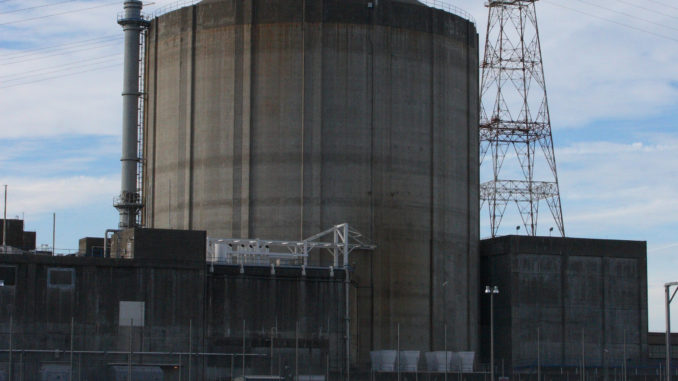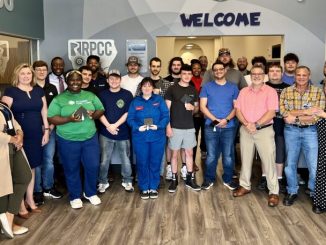
The recent troubles with the Fukushima nuclear power plant in Japan have left local residents wondering if the same catastrophe could strike Entergy’s Waterford 3 plant in Killona.
While the risk of an earthquake in St. Charles is rare, estimated to be a 1 in 50,000 chance every year, there is one major difference between the Fukushima plant and Waterford. After a 9.0 earthquake hit Japan, the following tsunami washed away Fukushima’s emergency fuel tanks and left the plant without power.
At Waterford, the plant can survive if it is completely isolated from the grid and all emergency nuclear fuel resides in a concrete bunker, according to company spokesman Carl Rhode.
In fact the fuel tanks, along with all the equipment needed to maintain the reactors and the spent fuel pool sit within a reinforced concrete structure with watertight doors.
“The plant can maintain safety systems even if it is completely isolated from the grid and it is self-sustaining because there is enough fuel on hand to run the plant for seven days in case of an emergency,” Rhode said.
When the plant was built 25 years ago, it was designed to withstand catastrophic events such as hurricanes, tornadoes, seismic events, levee breaches and maximum storm surge from a hurricane, Rhode said.
“Waterford was designed to handle any conceivable natural catastrophe and a margin of error was even added to that,” he said. “We have several defenses against any of those major events with backup systems and in some cases backup systems to those backup systems.”
Waterford 3 is built to withstand hurricane winds of up to 200 mph and tornado winds of up to 360 mph, Rhode said. The plant can also withstand flooding of up to 30 feet above mean sea level.
The plant sits at 15 feet above mean sea level.
But just because Waterford is designed to withstand natural catastrophes doesn’t mean operators rely solely on the plant’s defenses.
“Our operators are constantly training…they never stop going to school,” Rhode said. “They are drilled in a simulator and tested in a variety of different scenarios that include multiple systems failure.
“They are continually monitored and evaluated.”
Though Rhode couldn’t go into specific details on the different scenarios that operators are tested on, he did say they are extreme.
“They are scenarios like an earthquake followed by a tornado,” he said. “When you read the scenarios you are like “Wow, who came up with this stuff? But it engages our operators and makes them consider several different ways to keep the plant safe.”
Waterford 3 also has four separate emergency drills a year and they are graded every year by FEMA. Additionally, two full-time Nuclear Regulatory Commission inspectors are at Waterford and have the authority to stop the plant at any time if they see a problem.
“The nuclear industry is one of the most scrutinized in the world and we have dedicated employees who do all they can to maintain the safety of the plant,” Rhode said. “Residents can rest assured that Entergy has rigorous and stringent guidelines in place and looks at every contingency to protect the fuel and our customers.”
According to a recent analysis by MSNBC.com, Waterford 3 is the 41st most at risk nuclear power plant in the country in terms of earthquake probability.
There are 104 nuclear power plants in the U.S.
While MSNBC.com stands by the story, the Nuclear Regulatory Commission says they do not rank plants based on risk of damage from an earthquake.
“It was an incomplete report on the overall research that had been done by the NRC. Somebody at MSNBC took numbers and threw them together to create the rankings,” Lara Uselding, an NRC spokeswoman, said. “We have said that is not accurate because the NRC does not rank plants by seismic risk.”




Be the first to comment